eCommerce websites are fast-paced, dynamic, and ever-changing. But, to keep up with these changes and remain focused on achieving key business objectives, it is essential to set website goals and objectives for your eCommerce.
So what exactly do we mean when we say ‘setting goals and objectives? Well, there are several different ways of looking at it. A goal is something you want to accomplish in the long run, like expanding into a new market or increasing sales by a certain percentage. An objective is something measurable that you must complete to meet one of your goals (e.g., hiring a marketing manager).
A well-defined goal will help everyone on the team be on the same page and focus on the primary objectives. These principles can help you achieve tremendous success from your eCommerce website. So, do you know how to set goals and objectives for an eCommerce website?
Read on to find out more!
Do You Know The Difference Between Goals And Objectives Website?
Goals and objectives can be a little confusing, so we’ve put together a quick guide to help you out.
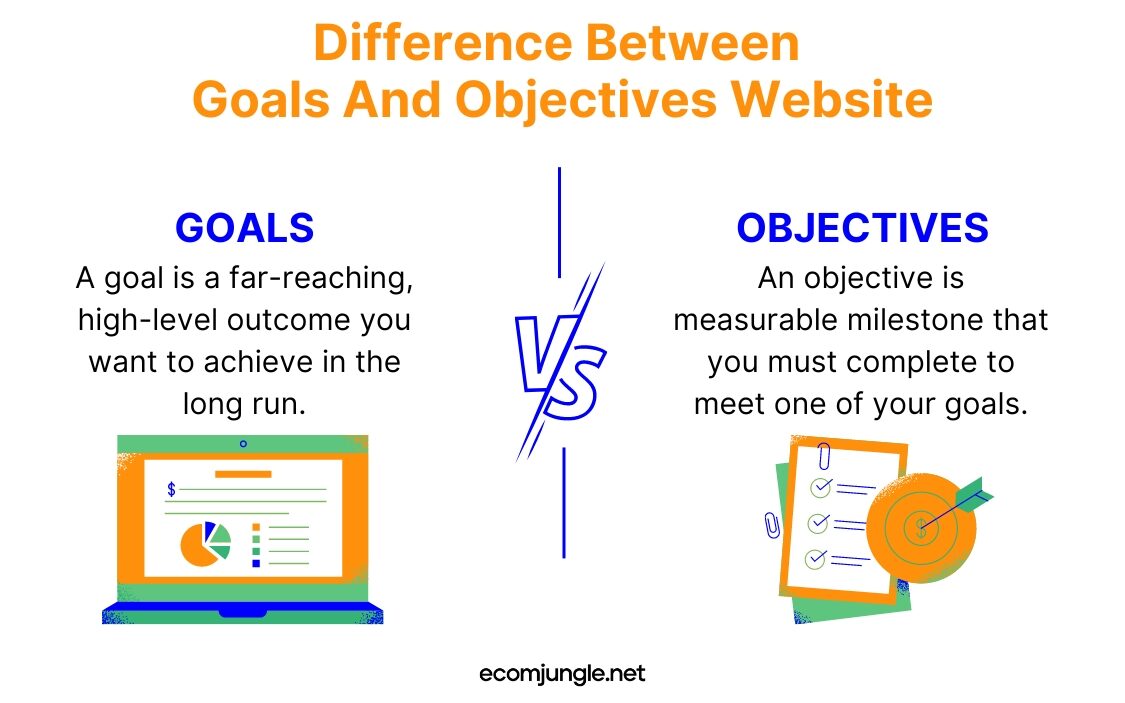
Goals – The result of a grand journey
A goal is a far-reaching, high-level outcome you want to achieve in the long run. It is something you want to accomplish in the future, such as expanding into a new market or increasing sales by a certain percentage. They need to be clear and well-defined so that everyone involved is on the same page about what needs to be done.
Objectives for website
An objective is measurable milestone that you must complete to meet one of your goals. It is something you must do to achieve your end goal. For example, if your goal is to increase online sales by 10%, one of your objectives might be to increase website traffic by 20%. If you can reach that objective, you are well on achieving your goal.
Outputs vs Outcomes – Learning The Difference Between A Result And An Expectation
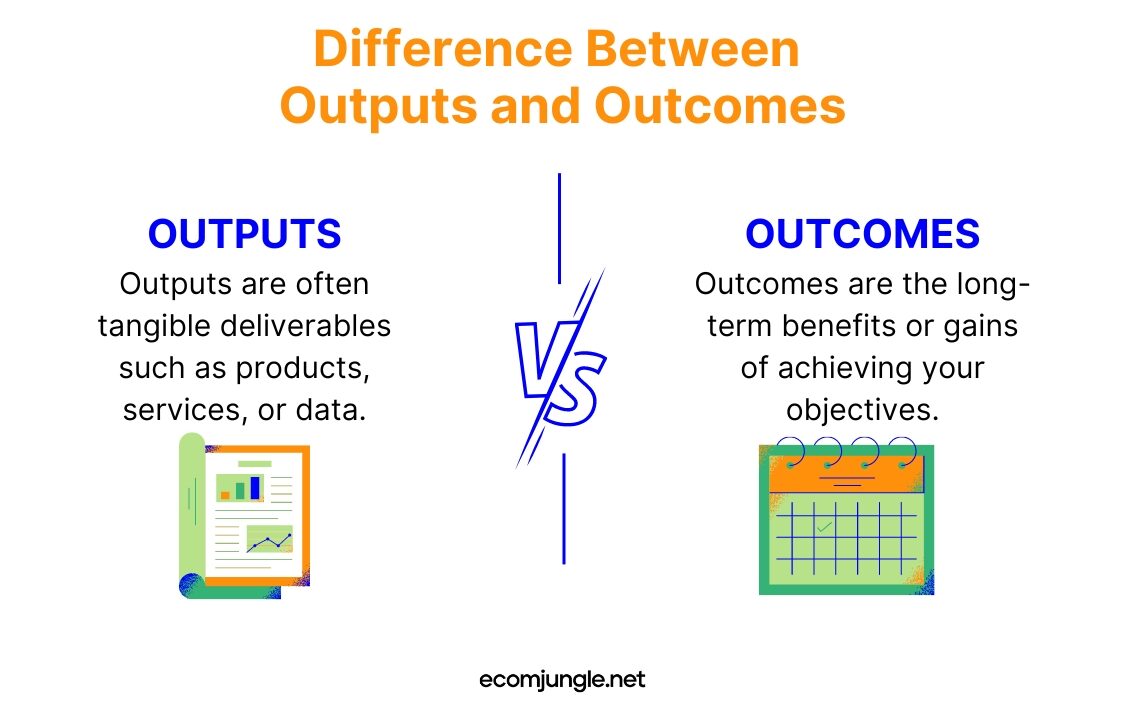
When setting website goals and objectives for your eCommerce, it is essential to understand the difference between outputs and outcomes. The significant difference between the two is that outputs are deliverables of the project. In contrast, outcomes are the results of achieving those deliverables, that is, the impact these outputs bring to the world.
Outputs are the things you will produce to meet your objectives. In other words, they are the things you must do to meet your goals. For example, if you start an online clothing store and aim to increase sales, one of your objectives is to hire a new eCommerce manager. In this case, the objective is to find the right eCommerce manager for the job. Likewise, the outcome will be to get good eCommerce management and an efficient and orderly online sales process.
Did you know it?
Output-based deliverables and products
Outputs are often tangible deliverables such as products, services, or data. For example, when you set goals and objectives for your eCommerce, one of your objectives could be to build a new eCommerce website. This objective would be an output-based deliverable. At the same time, you could have another objective: increase your sales by a certain percentage. This objective would be an outcome-based result.
Understanding these two types of goals and objectives is essential as outputs are often measurable, whereas outcomes are not.
Pro Tip:
When you measure the output results, you see how successful you have met an objective. For example, if you hire a new eCommerce manager and one of your objectives is to increase online sales by 20%, you will know if the new hire is successful and if you get more sales or not.
Outcomes-based results
Outcomes are the long-term benefits or gains of achieving your objectives. For example, if your goal is to increase online sales by a certain percentage, your outcome would be an increase in sales. You will know if your sales increased or not by checking your eCommerce sales reports.
When setting goals and objectives for your eCommerce websites, it is essential to understand the difference between outputs and outcomes. Outputs are the deliverables and products you must produce to meet your objectives. Outcomes are the results of achieving those objectives, i.e., the impact that these objectives have on the company.
Did you know the difference between outputs and outcomes?
Why Do You Need Website Goals And Objectives?
Setting specific and measurable website goals for your eCommerce is crucial because this will help you get everyone on the team to agree on what we want to achieve. It will also make it easier to monitor the success of your goals and help you see if you are moving in the right direction, if you are on the right track, if you need to make some adjustments, etc. By setting specific and actionable goals, you can progress toward achieving your objectives without getting lost in the bigger picture.
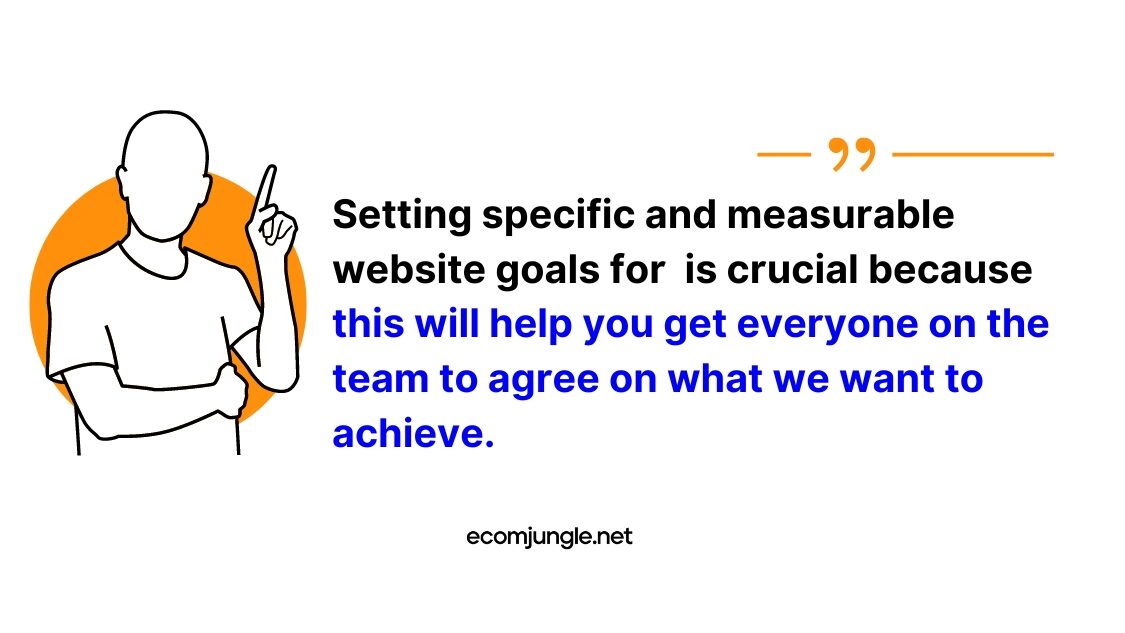
Pro Tip:
Setting website goals and objectives can also help you remain focused, so your team members can understand what they need to do to contribute to the business’s success.
Discover what SMART website goals and objectives are:
There are many different ways of setting goals and objectives for your eCommerce. However, the most effective way to measure success is to use the SMART framework. SMART is specific, measurable, achievable, relevant, and time-bound.
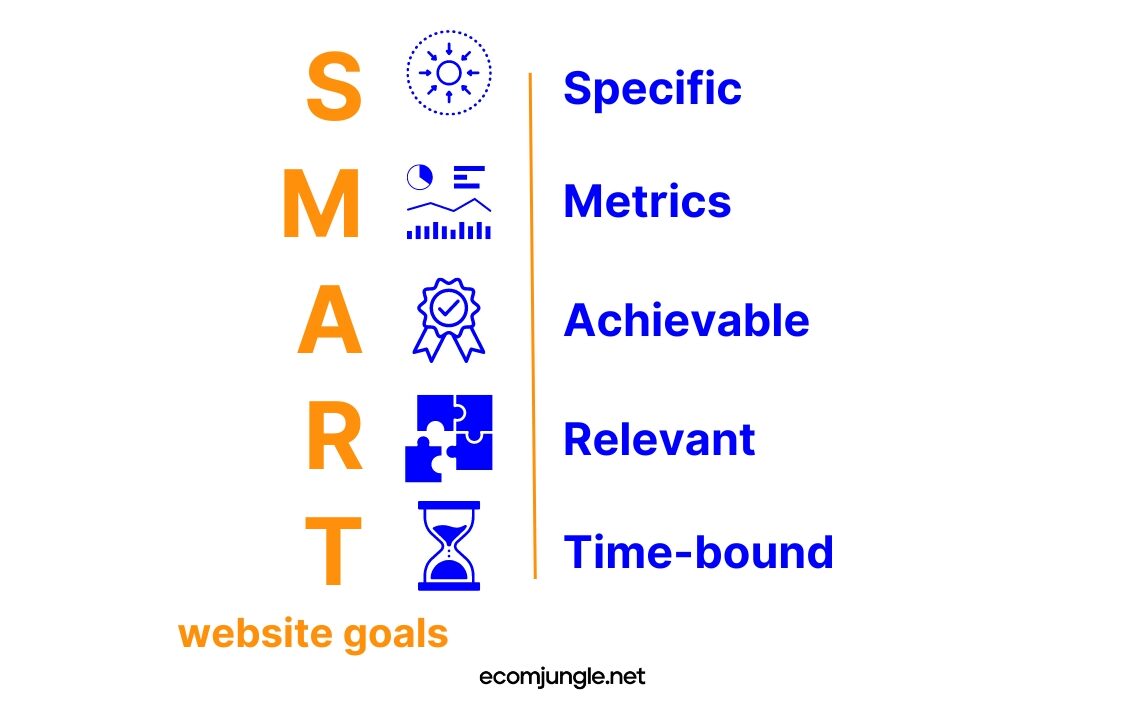
Specific
What are your goals and objectives? What are you trying to achieve? What are the outcomes you want to measure? Be as specific as possible when setting goals and objectives.
Metrics
What metrics will you use to measure success? What are the outcomes you want to measure? How can you tell if your goals and objectives were successful? How can you use data and insights to measure progress? If you want to answer these questions, perhaps you need to use Google Analytics as well.
Achievable
Is your goal or objective realistic? Is it something you can achieve? Is it a stretch goal, or are you setting the bar too low? If you set the bar too low, you risk missing out on growth opportunities.
Relevant
What is the goal or objective trying to achieve? What value does it bring to your business? Why is it important? What problem does it solve?
Time-bound
What is the deadline for this goal or objective? When do you want to achieve it? What is the timeline for this goal or objective?
How To Create SMART Website Goals?
When setting website goals and objectives for your eCommerce, start by brainstorming. What are some of the things you would like to achieve in the next year? What are some of the issues or problems you want to overcome? What are some of the opportunities you see for growth? Write down as many goals and objectives as you can think of.
Doing this will help you immediately focus on the most important goals and objectives that need your attention. Next, create a measurable and trackable plan to achieve your goals and objectives.
It will help you stay consistent and focused on the goals and objectives that matter the most!
Do You Know The Goals And Objectives Related To eCommerce Website Traffic?
As you set goals and objectives for your eCommerce website, it is crucial to understand why your website exists. Your website exists to provide information, solve problems, or help customers solve a pain point. It also exists to meet several business objectives. It helps you attract more visitors, increase your conversion rate, get more qualified leads, and increase sales.
When you set goals and objectives for your eCommerce website, think about the following questions:
- What does your website do for your visitors?
- What information can it provide?
- What problems does it solve?
- What pain points does it help customers overcome?
- How can you use your website to drive more sales?
By answering these questions, you will better understand the goals and objectives you need to set for your website.
For example, if you want to improve your search engine optimization to generate leads, you should use a google analytics account, social media, sales support, sales team, online customer support, email subscribers, try a website redesign, do a technical SEO audit, benchmark the existing website experience, do keyword research, create a content marketing plan, write new copy for products and services, create backlinks, set up ranking tracking software to measure progress, set goals in Google Analytics, etc. In this way, you will increase your website visitors and conversion rate to increase monthly sales.
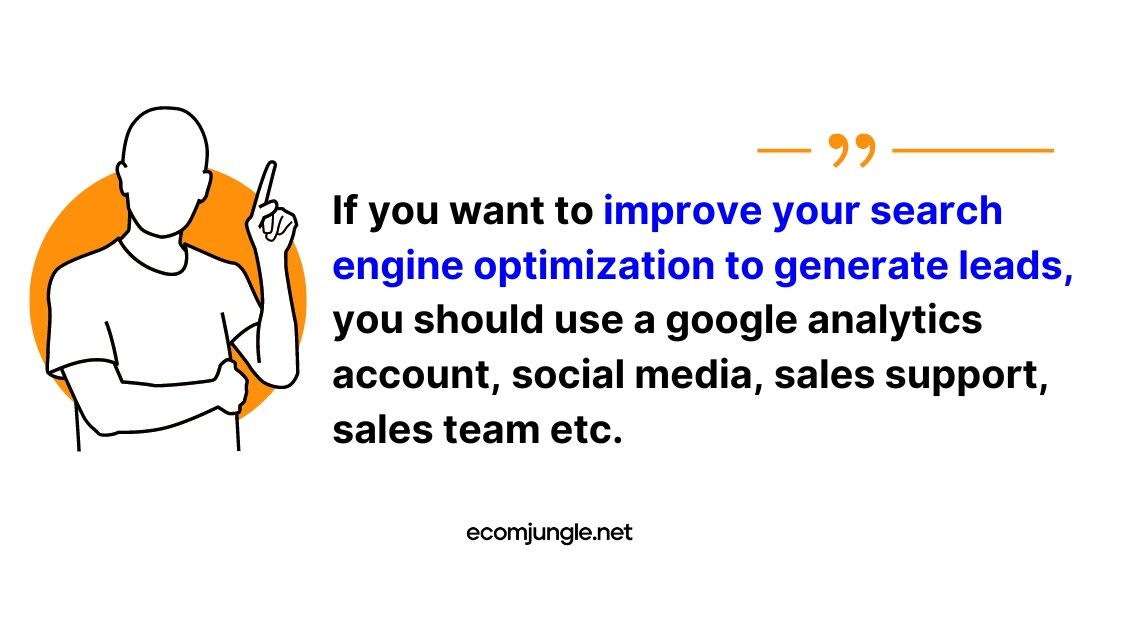
Likewise, you have to pay attention to this point to discover how to rank better your website on Google, so according to Ahrefs, 43% of eCommerce traffic comes from organic Google searches. So, it will help you set goals and objectives that will help drive more website traffic to increase sales. Likewise, it would be best if you had good rank-tracking tools, such as those mentioned in this article, to achieve several of these objectives.
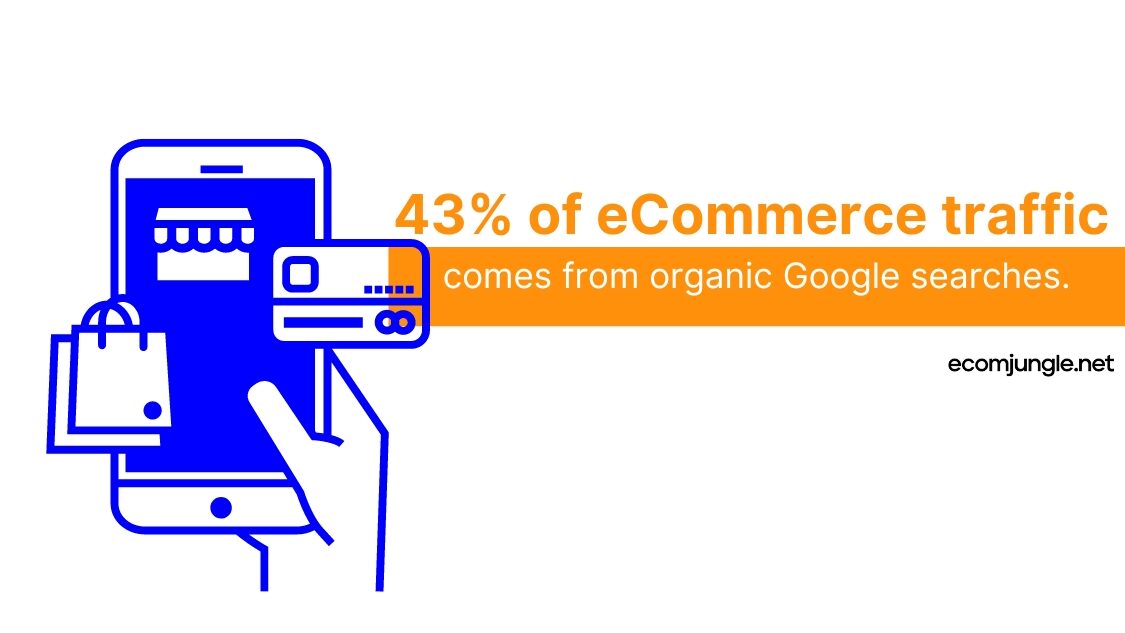
Discovering the difference between digital marketing and eCommerce website goals
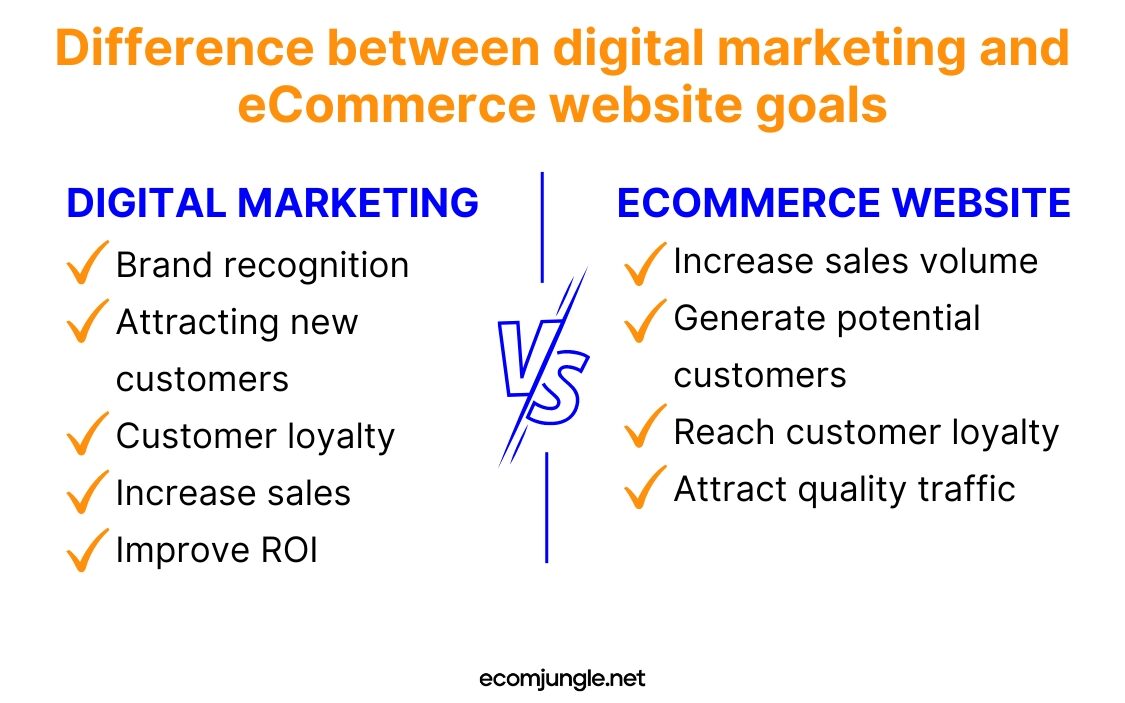
Marketing departments pay more attention to website objectives related to marketing efforts to skyrocket online success. These are some of marketing goals:
- Brand recognition: This allows you to position yourself in the market. Here the actions of the marketing strategy can focus on branding or brand identification.
- Attracting new customers: Here, new lines or channels should be explored to reach a more significant number of potential consumers and, thus, achieve better conversion rates. Then, you need to design, develop, and maintenance of your e-commerce website.
- Customer loyalty: After the first conversion of a customer, the objective is to keep them and keep them buying. In this way, it’s helpful for content and email marketing campaign.
- Increase sales: This is usually the quintessential goal. It could be the increase of transactions by customers and the improvement of the average amount.
- Improve ROI: It refers to the profitability achieved with each digital marketing activity carried out. For example, it’s necessary a web positioning with a good UX.
On the other hand, eCommerce website focus on reaching business goals related to how to maximize profitability. These are some of eCommerce goals:
- Increase sales volume: Ecommerce allows you to reach a larger target audience versus the physical store.
- Generate potential customers: Your store’s presence in the online environment can awaken interest in your products or brands on the part of a potential customer.
- Reach customer loyalty: This is one of the main objectives of any company. Suppose you generate a positive experience beyond customer satisfaction when buying a product or service. In that case, your eCommerce will be remembered by the customer for the next time.
- Attract quality traffic: The metrics we can analyze derived from your online store can be used to adapt sales strategies to customers’ needs. The goal is to ensure that most visits end in conversion, i.e., in a purchase.
Did you know it?
Setting goals and objectives for your eCommerce website
Suppose you want to ensure that you focus on your business’s exemplary aspects. In that case, it is essential to identify the goals of your eCommerce website. When you have recognized these goals, you can begin to set SMART goals for your business websites.
Using Google Analytics to monitor website visitors and achieve goals and objectives
Google Analytics is the world’s most widely used website analysis and tracking tool. It integrates with other Google services, such as Ads and Searches Console. It is possible to monitor the profile of those who access your website and the most visited pages, conversions, devices, cities, and other data. It is handy to achieve the objectives and goals of a website.
Suppose your website goal is to drive more traffic to get more leads. With Google Analytics, you can effectively monitor your online performance, website visitors, and start creating consistent strategies for your eCommerce.
Why Do eCommerce Websites Not Achieve Their Marketing Goals And Objectives?
If you have products or services you’re trying to sell, setting goals and objectives for your business will help you better understand what you need to do and why. Of course, every eCommerce website is different, but the process for setting goals and objectives remains the same. You have to apply those principles to your business. The best thing about setting goals and objectives for your eCommerce website is that it’s not a one-time event. No business stays the same, and neither should your goals.
Developing a marketing strategy is an essential part of starting a business. It will determine the use of the company’s resources and tactics to achieve its specific marketing objectives based on the needs and wants of its stakeholders. However, not all companies achieve the expected success with their strategies.
Where does the problem arise? The setbacks are generated because brands do not have stipulated objectives to achieve. Any effective marketing strategy must have defined marketing objectives and goals to succeed. When setting objectives, they must be SMART.
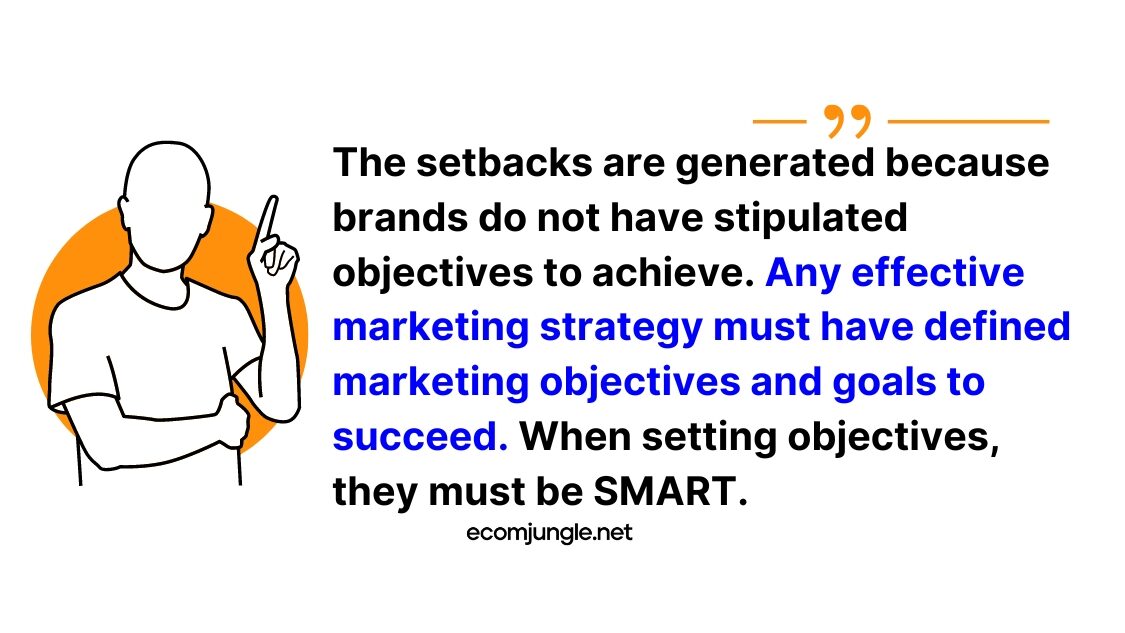
Pro Tip:
You’ll want to change your goals as you learn more about your business and how customers interact with it. That’s completely normal! It can help you stay focused on what matters most while keeping your eyes on the prize: growing your business!
Frequently Asked Questions
There are two main goals of eCommerce: The first is to increase your sales. An eCommerce website is a digital store where online shoppers can purchase goods and services. The second goal is to increase your customer base. An eCommerce website can help you gain more customers by promoting your business.
When setting goals and objectives for your eCommerce website, keeping the abovementioned acronym in mind is essential. The five goals are:
More Profits: you can achieve it by pricing your products appropriately and marketing them effectively to try to convert site visitors and potential customers in sales.
More online sales: This can be achieved by creating a better website, an effective marketing strategy, good sales team, providing excellent customer service, getting more traffic, and having the proper inventory.
Increased Brand Awareness: It’s possible building solid relationships with influencers, create a social media strategy, host events, and engage with your existing customers.
Customer Satisfaction: to achieve this website goal, you need to improve customer satisfaction by offering excellent customer service, providing a wide range of products, and maintaining a clean web design.
Better Conversion Rate: to reach this, you should adjust your website’s design, add pop-ups, create content for your target audience, have a blog post strategy, create informative and engaging content, and have a solid call to action.
The main goal that you should keep in mind while setting goals and objectives for your eCommerce website should be sales. A website is one of the best ways to get your products in front of potential customers and drive sales. The best eCommerce websites are designed to make it easy for customers to find what they’re looking for and to make a purchase from the comfort of their own homes. The best eCommerce websites also make it easy to keep track of inventory, manage customers, and make changes to your site when necessary.
An eCommerce website can be used as a marketing tool to expand your business, increase brand awareness, and build trust with new customers. When setting goals and objectives for your eCommerce website, it is essential to remember that there are no right or wrong ways to do so. With creativity and perseverance, you can set goals and objectives that are right for your business.
Conclusion
Setting goals and objectives for your eCommerce website will give you a clear roadmap for the year ahead. You will know what needs to be accomplished and which objectives must be completed.
Setting goals and objectives for your eCommerce website is like putting a destination or a finish line. It will help you stay focused on the journey and meet your goals. It will also help you overcome challenges along the way and successfully reach the finish line.
This way, you can better understand what you need to do, why you need to do it, and how you can measure your progress along the way.
Applying it, you will stay focused on what matters most while keeping your eyes on the prize: growing your business!